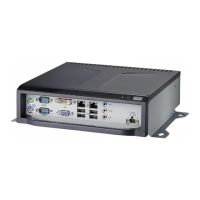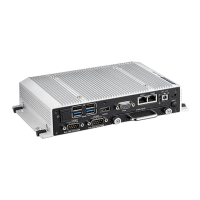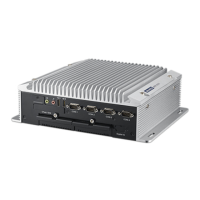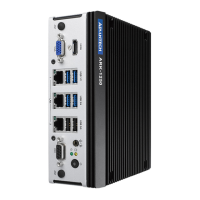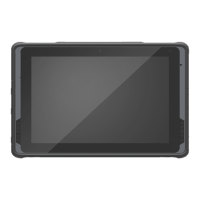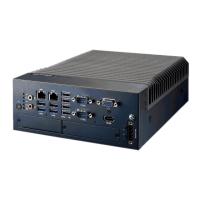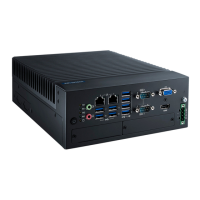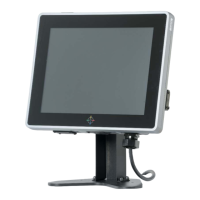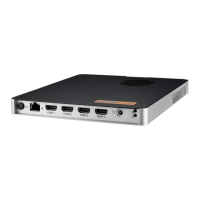Do you have a question about the Advantech ARK-2150 and is the answer not in the manual?
Steps to follow if a product is defective and requires warranty service.
Equipment tested and found to comply with FCC Class A limits for commercial environments.
Information needed when contacting support for assistance with the product.
List of optional accessories available for ARK-2150L and ARK-2150F models.
Important safety guidelines and warnings for operating and handling the equipment.
Overview of the ARK-2150, its processors, and target applications.
Detailed specifications of CPU, I/O, USB, Audio, Storage, and Expansion Interfaces.
Functional specifications of the Intel QM77 chipset, including processor, memory, and interfaces.
Dimensions and weight of the ARK-2150 unit.
System power input specifications and RTC battery type.
Operating and storage temperature, humidity, vibration, and shock specifications.
Overview of internal jumpers and external connector pin assignments for application.
Explanation of jumper configuration and listed jumper functions like Clear CMOS and Auto Power On.
Detailed diagrams and pin assignments for external I/O connectors like COM, Ethernet, USB, VGA, HDMI/DP.
Step-by-step instructions for installing HDD, Memory, and MiniPCIe modules.
How to access the BIOS Setup Utility by pressing F2 or DEL during system startup.
Description of the Main BIOS setup screen, including navigation and basic options like System Time/Date.
Detailed explanation of advanced BIOS settings organized into categories like ACPI, CPU, SATA, AMT, USB.
Configuration options related to the PCH-IO and System Agent (SA) through the Chipset tab.
Configuration options for boot device priorities, NumLock state, and quiet boot behavior.
Options for setting administrator and user passwords to protect BIOS access.
Procedures for saving changes, discarding them, restoring defaults, and exiting the BIOS setup.
Provides sample assembly code for implementing an embedded controller watchdog timer.
| USB | 4 x USB 3.0 |
|---|---|
| Video Output | 1 x VGA, 1 x HDMI |
| Power Input | 12V DC |
| Storage | 1 x 2.5" SATA HDD bay |
| Chipset | Intel SoC |
| Expansion Slots | 1 x Mini PCIe |
| Ethernet | 2 x Gigabit Ethernet |
| Serial Ports | 2 x RS-232/422/485 (jumper selection) |
| Audio | Line-out, Mic-in |
| Operating Temperature | -20°C to 60°C |
| Operating System | Windows 10 IoT, Linux |
| Graphics | Intel HD Graphics |

